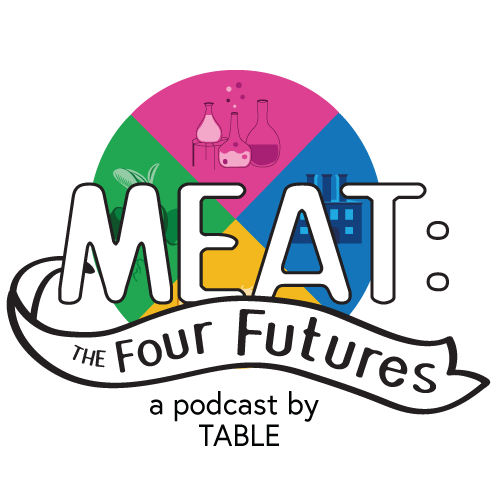Episode summary
Food has this incredible ability to bring people together. But it can also divide us. And how can it not? The same foods that some find so nutritious, that give us such a strong sense of who we are - are also believed by others to be at the center of so many existential concerns - global malnutrition, climate change, biodiversity loss, and inequality.
Meat sits at the center of this controversy. But is it the problem or the solution? Well, that’s complicated. Meat: The Four Futures bring us together on a journey where we can examine our past and our future, our decisions and the science that informs them.
This podcast will explore four competing visions for meat and livestock: 1) Efficient meat 2.0, 2) Alternative "meat", 3) Less meat, and 4) Plant-based no meat. In this episode we set up the series and unpack the promises and pitfalls with each future.
Listen to each part

Part 1 - Current picture, according to science (12 minutes)
Elin Röös, researcher at the Swedish University of Agricultural Sciences, breaks down the global picture and impacts of meat production and consumption around the world.
Follow Elin on Twitter @Elin_Roos_SE

Part 2 - Origin of the four futures (13 minutes)
Tara Garnett, researcher at the University of Oxford and director of TABLE, introduces the promises and pitfalls of the four futures.
Read the Gut feelings and possible tomorrows report.
Scientific articles and resources referenced
Meat, metrics and mindsets: exploring debates on the role of livestock and alternatives in diet and farming (TABLE, 2023)
FAO Stat (Food and Agricultural Organization of the United Nations, 2023)
Wild mammals make up only a few percent of the world’s mammals (Our World in Data, 2022)
OECD-FAO Agricultural Outlook 2021-2030 (OECD, 2021)
Meat and dairy production (Our World in Data, 2019)
Gut feelings and possible tomorrows: (where) does animal farming fit? (Tara Garnett, 2015)
What's the contribution of livestock to global GHG emissions?
Livestock Don’t Contribute 14.5% of Global Greenhouse Gas Emissions (The Breakthrough Institute, 2023)
Global emissions from livestock in 2015 - 11.2% of total GHG (FAO GLEAM v3.0)
Emissions from Animal Agriculture—16.5% Is the New Minimum Figure (Richard Twine, 2021)

